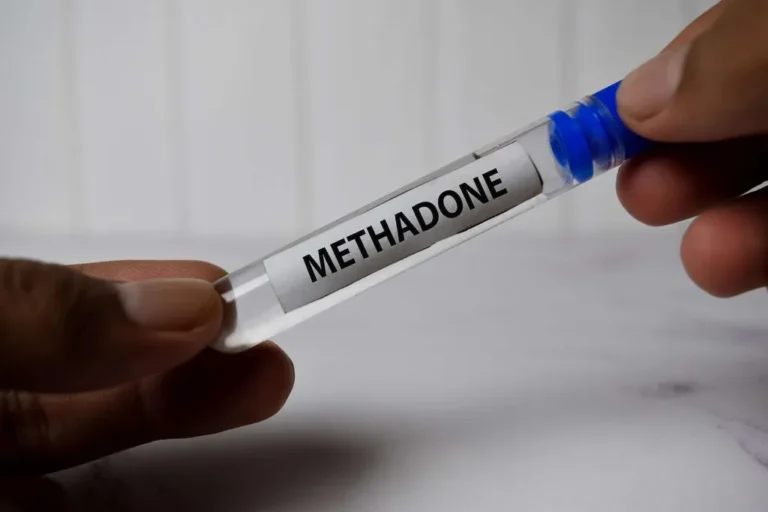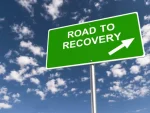Methadone Withdrawal: Symptoms, Causes and Treatment Options

Formerly used to treat heroin addiction and as a painkiller, methadone is an artificial opioid. Subsequently, it became apparent that this medicine rapidly leads to addiction and ruins the user’s health. Some of the most common methadone withdrawal symptoms comprise unbearable agony and a constant deterioration of the patient’s well-being.
The withdrawal stage is highly challenging. It frequently results in pain and raises the risk of relapse. If you want to manage such an experience with ease, it is vital to understand the timing, severity, and possible changes in these symptoms. Today, let’s explore the complexities of methadone withdrawal and look at the variety of symptoms people may experience. Moreover, let’s see how EcoSoberHouses can help you improve your life.
What is Methadone Withdrawal
Methadone is a highly pernicious drug. It doesn’t produce euphoria, but instead, a person experiences peace and self-assurance, and his mood grows better. Simultaneously, thinking stays clear, and reactions don’t slow down. Such a state encourages continued use.
When the body adapts to relying on methadone for its regular function, a dependency forms, and painful withdrawal happens from cutting down the dosage or going for an extended length of time without the required amount. If you try to refrain from taking the medicine, it may bring uncomfortable emotional and physiological side effects. The first symptoms begin to appear 48 hours after stopping.
Various factors might impact the severity and length of this condition — the dosage, timing, and overall health of the individual. Methadone users have to detox in a hospital setting since the process might result in unpleasant symptoms. Ultimately, it lessens the intensity of methadone withdrawal effects. It’s a common feature of the majority of inpatient and outpatient treatment plans.
Withdrawal symptoms occur because the body is striving to return to its normal state, leading to certain functions overcompensating for others that may be disrupted. The body needs time to heal, and withdrawal symptoms are only a byproduct of the body trying to find relief.

Take back control of your life and start on the road to recovery now.
Symptoms of Methadone Withdrawal
Methadone withdrawal is a grueling physical and emotional journey. Here’s a glimpse into the common problems that may arise during this stage:
- Fatigue becomes more frequent; it drains your energy reserves.
- A runny nose and watery eyes often usher in the initial physical signs.
- Increased perspiration, sometimes accompanied by chills, becomes a familiar sensation.
- Difficulty falling asleep or staying asleep disrupts your sleeping patterns.
- Frequent mood swings and irritability leave you feeling on edge.
- Feelings of sadness, hopelessness, and a loss of pleasure may characterize depression.
- Some physical discomforts like irritability or diarrhea may persist.
- Though less intense, the desire for methadone still exerts a powerful pull.
- For some individuals, depression may intensify.
It’s vital to seek medical supervision and support. It reduces the chance of a recurrence and aids in the efficient management of these symptoms.
Withdrawal Causes
So, what, then, are the main causes of methadone withdrawal? Primarily, it’s underdosing. The body goes through detoxification from both narcotics when the prescribed dose of meth is insufficient to offset the withdrawal from other opioids. Second, it’s a physical reliance. The unpleasant effects occur if you cut off or drastically lower the amount you’re taking when the body has already developed a physical dependence.
Let’s look at other typical root causes of withdrawal:
- Methadone dosage errors might result in withdrawal symptoms from the opioid it was supposed to treat.
- Abrupt discontinuation of methadone contributes to withdrawal symptoms. The severity of these symptoms is often tied to the suddenness of the medication cessation. According to the WHO guidelines, it’s advised to decrease the amount by 5 to 10 mg per week until you get a 40 mg dose. Then, the rate of decrease should be slowed down to 5 mg per week.
- Misusing other substances, especially those that affect the same opioid receptors as methadone, can exacerbate the symptoms.
Withdrawal from methadone can be uncomfortable, but it’s crucial to understand that it’s a temporary phase. With proper medical supervision and support, people can undergo successful detoxification and heal from addiction.
Methadone Withdrawal Timeline
Methadone acts as a prolonged-release opioid — it may stay active from 8 to 59 hours. Consequently, the withdrawal symptoms develop more gradually and persist longer.
In general, the withdrawal starts within 24–36 hours after the last intake. Nevertheless, among some users, it takes several days before the body starts experiencing the withdrawal rollercoaster. The first ten days of detox are by far the most intense.
Chills, fever, a racing heart, and muscle aches are common unwelcome guests during the first two days.
During the first week, cravings and other symptoms peak. Anxiety, body aches, and irritability are frequent. Additional symptoms like depression, vomiting, and cramps also go along.
Then, during day 15, as the days go by, symptoms start to retreat, though some, like irritability, diarrhea, and physical discomfort, linger. Cravings to get methadone can still be strong, and depression might worsen among some individuals.
When we talk about week 3 and beyond, low energy, anxiety, sleep disturbances, and cravings persist. Additionally, many people experience post-acute withdrawal syndrome (PAWS) 4-6 weeks later. It can last for months or even up to two years. Moreover, it brings irritability, anxiety, depression, sleep disorders, and anhedonia (the inability to feel pleasure).

How Can You Manage Withdrawal?
The easiest way to escape such an uncomfortable experience is to go off the opioid prescription under the supervision of medical staff. But keep in mind that these symptoms are usually mild and transient. To manage the opioid withdrawal, remember these suggestions:
- Hydration is key. Drink lots of water to stay hydrated, especially if you’re sweating, feeling queasy, or vomiting.
- Practice mindfulness. You may manage your pain and discomfort by engaging in activities like yoga and relaxation exercises.
- Seek support. Never be afraid to ask your friends and family for more help when things are tough.
- Talk it out. Discuss your options for therapy and symptom management with your physician.
In the end, try not to let fear stop you from quitting opioid use. Discuss a plan with your physician to make the treatment more tolerable.
Can Medical Detox Help with Methadone Addiction?
Although many people find great success with methadone maintenance therapy (MMT), some decide to stop using it completely. If you want to get clean, you need a careful approach.
The best way to succeed is to lower the dosage under a doctor’s supervision. The procedure usually takes a few weeks or months. It combines behavioral treatment and additional psychological support with a progressive dosage decrease. This all-encompassing strategy improves the chances of long-term recovery and abstinence. Moreover, it assists people in managing their symptoms.
Treatment teams consider moving the patient to a different maintenance drug, such as buprenorphine. Potential advantages of this substitute include a lower chance of respiratory depression and more dispensing flexibility. Though immediately switching to another medicine might cause severe problems for those who are reliant on larger dosages, such transitions need to be planned carefully.
Treatment of Methadone Withdrawal
Strict medical monitoring is a must. When included in the therapy for opioid addiction, it’s advisable to navigate the path with continuous guidance from a specialist. The patient and their physician should work together to decide whether to reduce or stop using methadone. Moreover, you need to consider the timing and speed of dosage reduction.
A great scope of solutions is available to ensure every patient finds an appropriate fit, even though treatment plans differ significantly. If a drug addiction expert determines a person’s methadone dependency is not severe, outpatient care is a good alternative. Additionally, people who are done with an inpatient program but are still getting used to sobriety are usually advised to do it. There are several types of outpatient care. There are Intensive Outpatient Programs (IOPs), Partial Hospitalization Programs (PHPs), and Standard Outpatient Programs (OPs). Therefore, each patient must have expert assistance to help them decide on the proper treatment.
So, if you want to address withdrawal, you need a multifaceted strategy that aims to minimize the risk of relapse. It frequently entails:
Drug treatment
To address the meth withdrawal symptoms and improve your chances of full recovery, your doctor may prescribe medication. Commonly used medicines that help relieve withdrawal symptoms or minimize the duration comprise clonidine, naloxone, and buprenorphine.
Psychotherapy
Individual therapy helps you explore the causes of methadone addiction, get constructive coping strategies, and the tools you need to control relapses. Furthermore, talking with people who are going through similar things as you is priceless support and understanding.
Education and awareness
It’s vital to demystify the withdrawal time frames and warning signs. This lessens the fear and anxiety often associated with the process. Moreover, the experts at the rehabs can help you set realistic expectations.
Physical health control
Pre-existing medical disorders such as diabetes, cancer, or heart issues necessitate closer monitoring and further treatment during meth withdrawal to control any side effects. Regular medical checkups are necessary to keep the entire process safe and successful.
Self-care strategies
To build a solid barrier against relapse, you must remove triggers and temptations from your environment. People may be able to control their symptoms and maintain their sense of wellness by engaging in enjoyable and relaxing activities.
In a nutshell, it’s critical to keep in mind withdrawal is a process rather than a destination. With ongoing help and comprehensive medical care, people can effectively overcome the addiction.

This can be a difficult journey, but you don’t have to go it alone. Let us be your guide and provide you the environment needed to regain control of your life and begin the path to recovery.
Help from EcoSoberHouses
The rates of relapse among people with methadone use disorders are notably high. Approximately 3 out of 4 people who undergo opioid detoxification experience relapse within a period of 2–3 years.
However, this doesn’t have to be your story. EcoSoberHouses offers a supportive environment designed to empower you on your path to recovery. When people concentrate on their physical and emotional well-being, they successfully walk through this process and get closer to a healthy future.
EcoSoberHouses provides a thorough and all-encompassing approach to getting back to your life. Regardless of one’s origins or identity, we are committed to creating a welcoming and accepting environment where people recover without fear of non-acceptance. Our goal is to give each person a genuine feeling of belonging and the resources they need to reintegrate back into society successfully.
If you or someone you know is struggling with methadone addiction, there is help available. EcoSoberHouses is prepared to help you on your path to long-term sobriety. If you’re prepared to begin a new life free from addictions and the stress of withdrawals, give us a call. We are available to assist you on your path to recovery.




